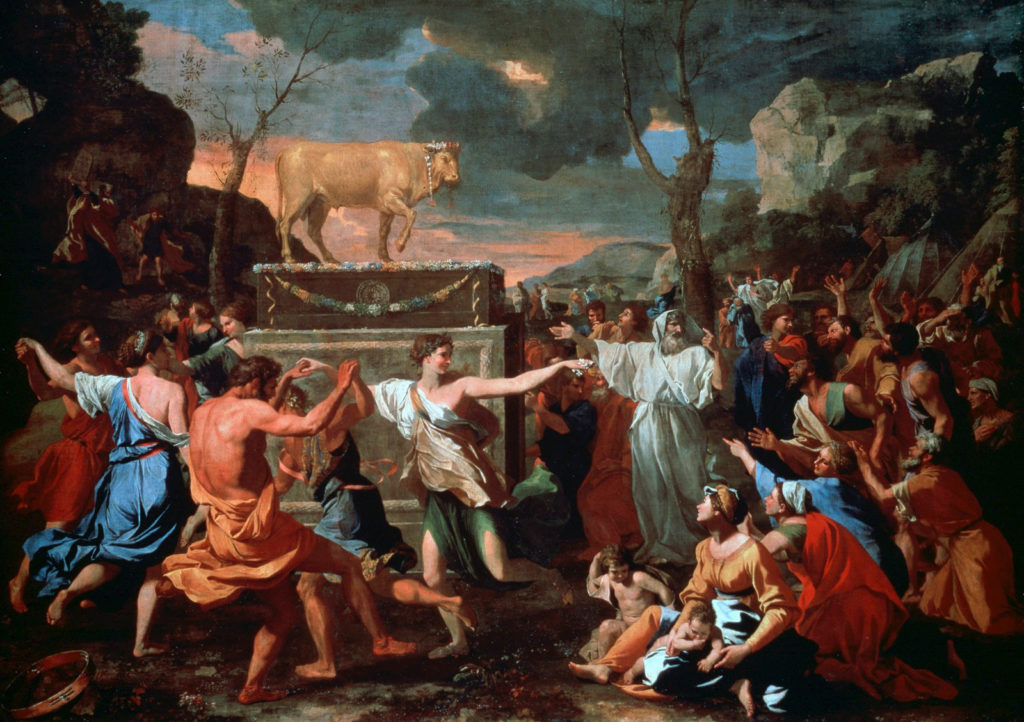
(6 – 7 Minute Read)
Exodus 30:11 – 34:35
Ki Tisa begins with the Almighty speaking to Moses; He instructed him regarding the method of taking a census. Each person over the age of twenty was to pay a half shekel — not more, not less — as an expiation for himself to avoid a plague. The money would help maintain the service of the Tabernacle.
A laver of copper was to be made for Aaron and his sons to wash their hands and feet before entering the Tabernacle or approaching the altar for service. It would be a law for all time throughout the ages.
A sacred anointing oil was to be blended with myrrh, cinnamon, and other fragrant spices. The Tabernacle and all items therein was to be anointed with it, as well as Aaron and his sons. The oil was to be sacred throughout the ages; it was not to be used cosmetically or replicated by any layman.
Incense was also to be made of a blend of frankincense and fine herbs for the Tabernacle service. Like the anointing oil, it was prohibited for any layman to replicate it.
The Most High told Moses that He had singled out Bezalel of the tribe of Judah, whom He had endowed with great skill as a craftsman. Oholiab of the tribe of Dan and other skilled craftsmen would assist him. Together they would construct the Tabernacle and all of the items therein, the priestly vestments, the anointing oil and incense, etc. — i.e. everything that the Almighty had described.
The Almighty further commanded the people of Israel through Moses to keep His Sabbaths; it is a sign between Him and the Jewish people throughout the ages. The Most High said, “You shall keep the Sabbath, for it is holy for you.” He who profaned it was liable for the death penalty. For six days labor could be performed, but the seventh day was a day of complete rest, holy to the Almighty. The people of Israel were to observe the sabbath throughout the ages as a covenant for all time as a sign between the Most High and the Jewish people. For in six days the Creator made heaven and earth, and rested on the seventh.
When the Almighty finished speaking with Moses on Mount Sinai, He gave Moses the two stone tablets of the Pact inscribed with His “finger.”
When the people of Israel saw that Moses remained so long on the mountain, they gathered against Aaron and demanded that make them a “god” (i.e. idol) to go before them, claiming that they didn’t know what happened to Moses.
Aaron told them to remove the gold earrings from their wives and children, and bring them to him. They did so, and he molded it into a golden calf. The people exclaimed, “This is our ‘god’ who brought us out of Egypt.”
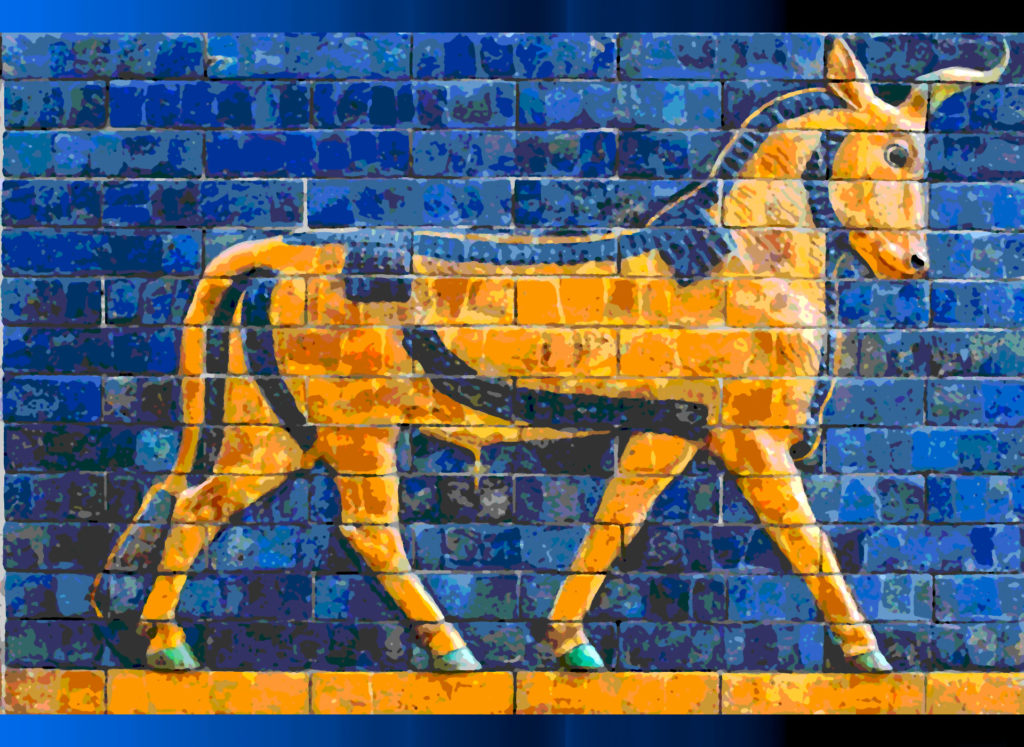
Seeing the actions of the people, Aaron built an altar before it and announced that the next day would be a festival before the Almighty. Early the next day, the people brought sacrifices; they feasted and danced.
The Most High told Moses to hurry down, explaining what the Israelites had down. He further indicated that He was considering destroying “this stiffnecked people,” and instead making a great nation of Moses’ descendants.
Moses implored the Eternal One, pleading that He not give the Egyptians the excuse to claim that the Almighty brought His people out of Egypt in order to annihilate them. He also reminded the Most High of His covenantal promises to Abraham, Isaac, and Jacob, that their offspring would be as numerous as the stars and possess the land. And so the Almighty relented.
As Moses and Joshua returned, Joshua exclaimed that he heard the sounds of war in the Israelite camp. Moses countered that it was not the sound of triumph or defeat, but of celebration.
When Moses saw the golden calf and the dancing, he hurled the tablets in a rage. He destroyed the golden calf, grinding it into powder, mixing it with water, and forcing the Israelites to drink it.
He confronted Aaron, demanding to know how they intimidated him to do such a great evil. Aaron claimed that he merely tossed the gold into the fire and the idol emerged.
Seeing the people were menacingly out of control, Moses stood up and called all who were loyal to the Most High to him; the tribe of Levi rallied. Moses ordered the Levites to strike down their fellow Israelites engaged in idolatry. They did so, killing three thousand persons.
The next day, Moses declared to the people that they had sinned greatly, but that he would beseech forgiveness for them. Moses then asked the Almighty to forgive the people; if not, he requested that the Most High erase him from His book. The Eternal One replied that each person would be accountable for his or her own sin only and be erased accordingly, and a plague came upon the guilty people.
The Almighty instructed Moses to set out along with the Israelite people towards the land He swore to Abraham, Isaac, and Jacob — a land flowing with milk and honey. The Eternal One would send an angel before them to drive out the Canaanites, but He would not be in their midst, since they were stiffnecked, lest He destroy them. Hearing this harsh statement, the Israelites went into mourning and removed their finery and jewelry, and remained that way.
Moses pitched the Tabernacle outside the camp. Whenever Moses went out to the Tabernacle, the people would rise and stand until he had entered it. The pillar of cloud would descend upon the Tabernacle while the Most High spoke with Moses “face-to-face.” Upon seeing the cloud descend, the people would bow low at their tent entrances. Moses would then return to the camp, but Joshua, his attendant, would not stir from the Tabernacle.
Moses asked the Almighty to go before him and the people, and to further show him His ways, since the Eternal One had said that he singled Moses out by name, and that he had gained His favor. The Almighty agreed. Moses also requested to behold His Glorious Presence. The Most High indicated that He would allow Moses to observe his goodness, His name, and His compassion. But no human being, including even Moses, could perceive the Eternal One’s “face” and live.
The Most High instructed Moses to position himself in a nearby rock edifice. He would shield Moses with His “hand” as He passed by, and then remove His “hand” and allow Moses to perceive His “back.”
The Almighty commanded Moses to carve two tablets of stone like the first; He would inscribe on them the words of the first tablets. Early the next morning, Moses came up alone to the Eternal One on Mount Sinai with the tablets as instructed, and the Most High came down to Him in a cloud. The Almighty passed by, proclaiming His name and saying, “The YKVK, the YKVK! — Compassionate, gracious, and slow to anger, abounding in kindness and faithfulness, extending kindness to the thousandth generation, forgiving iniquity; yet He does not remit all punishment, visiting the iniquity of parents upon the descendants to the third and fourth generations.”
Moses quickly bowed low and begged the Most High to go in their midst, despite the stiffnecked nature of the Israelites, and to forgive them.
The Almighty declared that He hereby made a covenant with them. He would work wonders on their behalf such as had never been seen. The people of Israel were to drive out the Canaanite inhabitants and refuse to make any alliances with them or intermarry with them, lest they become drawn to their idolatry; the Most High is an impassioned Deity. They were required to destroy their idols and other objects and places of pagan worship. They were not to make molten “gods” (i.e. idols) of any kind.
The Feast of Unleavened Bread* [related to Passover] was to be observed for seven days during the month of Abib (i.e. springtime).
The first male issue of the womb belonged to the Almighty of both human as well as livestock, requiring redemption accordingly.
Six days were for labor, but the seventh day they would cease, even during the harvest.
The Feast of Weeks* [Shavuot] would be observed as the first fruits of the wheat harvest, and the Feast of Ingathering* [Sukkot] at the turn of the year. Three times a year the Jewish males would appear before the Sovereign of Israel. The Most High would enlarge their territory and protect their land as they did so.
They were not to offer the blood of His sacrifice with anything leavened* (i.e. with yeast products). The Passover sacrifice would not be left over until the morning.
The choice first fruits would be brought to the Almighty.
The Jewish people were not to boil a kid in its mother’s milk.
The Almighty commanded Moses to write down these commandments as well as the Ten Commandments in accordance with the covenant that He would make with Moses and Israel. Moses remained there with the Almighty for forty days and forty nights, neither eating nor drinking.
When Moses returned to the camp, he was not aware that the skin of his face was radiant and glowing. Aaron and all the Israelites recoiled from Moses, but Moses called them back and instructed them according to the words of the Eternal One. Afterwards, Moses put a veil over his face, and did so in the future after speaking with the Almighty.
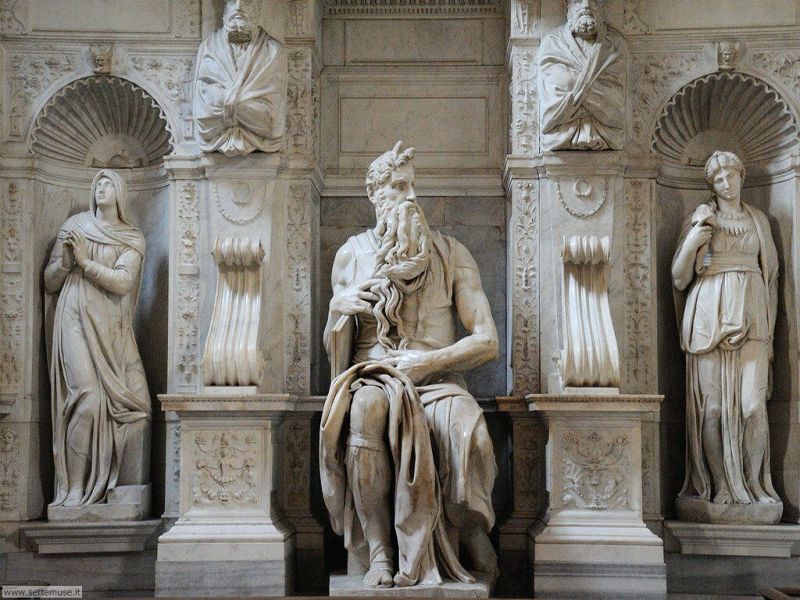
The incident of the golden calf, known in Hebrew as the chet ha’eigel, is one of the most ominous and in some ways puzzling in the entire Torah. And Rabbi Moshe ben Nachman, better known as the RambaN, reviews the topic at length.
The first question that the RambaN examines is why. What was the motivation of the Israelites to create the golden calf? Rashi postulates that the Jewish people simply wanted to replace the Almighty with idolatrous false deities. The RambaN, however, disagrees. He instead focuses that the Israelites requested that Aaron construct something or someone “to go before us, because we don’t know what happened to Moses.” In other words, the Israelites wanted a new conduit to connect with the Most High and be Divinely led. The problem was that the Almighty was actively providing the mechanism to connect and be led by Him, namely the service of the Mishkan, or Tabernacle, as well as observance of the Torah. While the people of Israel might not have yet heard all of the instructions regarding the Tabernacle construction and service, they did hear with their senses of perception that the Almighty clearly said in the utterance of the Ten Commandments that they were not to make any images or idols of gold, silver, etc. (Shemot / Exodus 20:4) It should also be noted that Moses was preparing to descend the mountain after forty days, not on the fortieth day. In other words, the Israelites miscalculated the time frame of Moses’ absence, and they certainly didn’t wait any extra time — such as a week or even a few days — to be sure that Moses wasn’t en route to return. If they had waited the proper amount of time, then Moses would have returned accordingly. More pertinently, the Torah narrative perhaps implies that the Jewish people were anxiously trying to find an excuse to replace Moses with the golden calf conduit. Thus, while the RambaN notes that he does not feel that the Israelites were initially trying to replace the Almighty with false deities (like the Egyptian “gods” or “goddesses,” for example) per se. However, the Torah makes it clear that the people of Israel still had no excuse for their actions; on multiple levels, they knew better.
One of the questions that often arises is why would the Jewish people worship a golden cow in any context? What’s more, King Jeroboam of Israel constructed golden calves and created his own religious cult centered around them (Melekhim Aleph / I Kings 12). Why did the Jewish people repeatedly seek to create a worship system involving golden cows?
The RambaN cites a Kabbalistic principle that might shed some light on this “bovine infatuation.” Because the Almighty transcends all dimensions of time, space, spirituality, etc., we are always connected with Him in one way or another. As King David declared in Tehillim / Psalms 139:
“If I ascend into the heavens, You are there; if I descend into the nether-world, You are with me.”
Thus, an analogy can be made of being in the same room with our human father (l’havdil). We might have a great relationship with our father; it might be terrible; we might not even be on speaking terms. But no matter what, we are in the same room, and therefore we have some kind of relationship and interaction, either good or bad. (Even ignoring someone standing a few feet away from us is a form of interaction.) In that context, the connection inevitably exists; the quality is what is variable. Similarly, every human being has a connection with the Almighty merely because He created us and we exist; it is our responsibility to ensure that this relationship is as positive and intimate as possible.
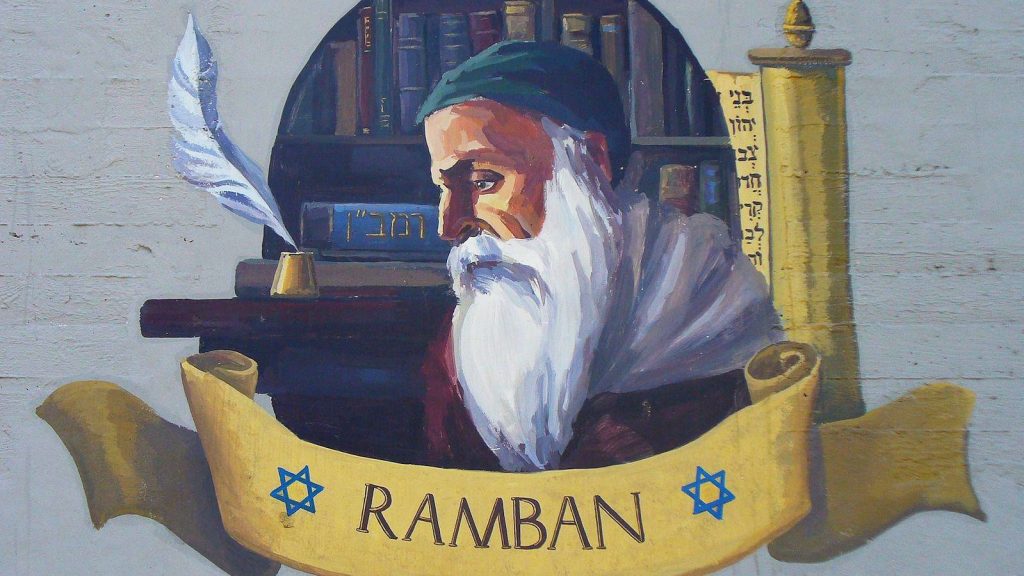
In this sense, the RabmaN notes a Kabbalistic premise that relates our connection with the Most High to the faces of the cherubim as described in Yechezkel / Ezekiel 1. The cherubim who uphold the throne of the Almighty have four faces: a man to the front, an eagle to the rear, a lion to the right, and an ox to the left. These four faces indicate how the Almighty connects with us, and us with Him. In an active sense, the human face represents the blending of the physical and spiritual for total harmony between the Creator and His creation; indeed, this was the very purpose for which humanity was created. (Spoiler alert: thus far mankind has failed abysmally in this goal.)
The eagle, however, represents the judgment that ensues when we separate ourselves from the Most High by transgressing His commandments and rebelling against him. Accordingly, some have noted that the Eternal One utilized metaphors of an eagle swooping down upon its prey to describe his Divine judgment, such as Devarim / Deuteronomy 28:49. Similarly, the Almighty used the term “the wings of eagles” to describe His deliverance of the Israelites from Egypt in Shemot / Exodus 19:4. Some have pointed out that this could be an allusion to the fact that the people of Israel were rescued from Egypt through the Ten Plagues, i.e. severe judgment upon the Egyptians, rather than on the basis of their own merit. As our chachamim, rabbinical sages of blessed memory, have pointed out, the Jewish people had descended to the lowest levels of spiritual impurity before reaching the “point of no return,” so to speak. Some have also noted that the two nations that destroyed the Beit HaMikdash, or Holy Temple, namely Babylon and Rome, as well as Nazi Germany, have all used the eagle as their national symbol.
On the right and left sides, there are the faces of a lion and an ox respectively. The Talmud indicates in Yoma 21b that the fires of the offerings of the first Beit HaMikdash, or Holy Temple, “crouched like a lion.” The Maharal of Prague likewise discussed the notion that this imagery of a lion emphasized the strength of the connection with the Almighty through the service of the first Temple. In contrast, the RambaN declares that the ox being on the left represents the opposite; it symbolizes negativity and destruction. The RambaN’s hypothesis was that the Israelites were trying to worship the golden cow in an effort to “channel” Divine power against the destructive forces of the wilderness. But some have taken the Rabman’s principle and gone a slightly different direction with it. If the lion represented connecting with the Almighty through righteous adherence to the Torah and and proper engagement of the Tabernacle / Temple service, then perhaps the ox symbolized connecting with the Most High in a more negative way, or connecting with Him despite (or even through) disobedience. In other words, just like our analogy of a father and child in the same room, a person can still have a “relationship” with their father even if they are not conducting themselves appropriately. The obvious problem is that the relationship will be poor and inferior to the connection that would result from obedience to the father; what’s more, punishment will inevitably result.
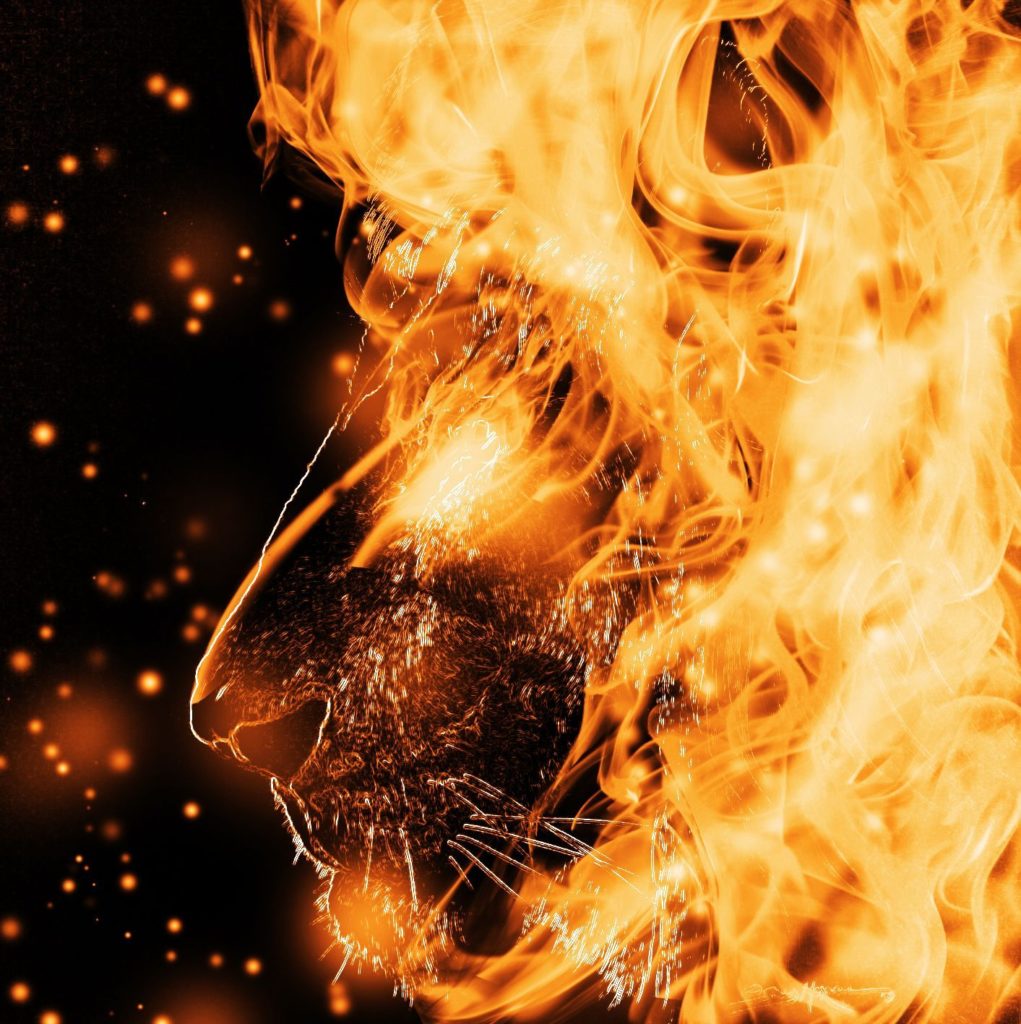
In short, some have suggested that the act of (supposedly) worshipping the Most High through an ox, such as golden calves, is really an attempt to achieve spirituality and connection with the Almighty through our way, and not in accordance with the commandments of the Torah. This idea parallels the very first sin the Garden of Eden when Adam and Eve attempted to “become like G-d” by doing things their own way — even disobeying the Creator (Bereishit / Genesis 3).
Following this concept, we can also begin to understand why King Jeroboam established the cult of the golden calves when the northern tribes of Israel broke away from the Davidic dynasty of Judah. The purpose was to create a method of (supposedly) worshipping the Almighty without requiring participation in the Torah-directed service of the Beit HaMikdash, the festivals, etc. For political reasons, King Jeroboam wanted to keep his citizens away from the Beit HaMikdash and religious practices of his new rival, Jerusalem.
But what is so appealing about this method of supposedly connecting with the Almighty through the “dimension of the ox,” if you will? In theory (but not actually), worshipping the Most High in this way does not require obedience to the Torah; a person can do what he or she wants, and not what the Almighty wants, and still have a connection with the Eternal One. It’s like having your cake and eating it, too. Some have suggested that after hearing the Ten Commandments and the initial commandments of the Torah recorded in Mishpatim, the Jewish people were seeking a method of connecting with the Most High (or perhaps as RambaN implies, manipulating His power for their protection) that did not require them to follow these seemingly “inconvenient” rules, such as “You shall not construct idols,” “You shall not steal,” “You shall not commit adultery,” et al.
What the Israelites didn’t understand is that there are more dynamics at hand than just the erroneously-perceived “easy way out” of the “ox method.” Just like the faces of the cherubim, the lion and the ox are linked with the human and the eagle. The human face represents harmony and connection; the eagle represents separation and judgment. By trying to utilize the “ox method” of connecting with the Most High (or the lack thereof), the Jewish people also pushed themselves away from Him spiritually. Thus, they entered into the dimensional dynamic of His Divine judgment and punishment, as symbolized by the eagle. As a result, the Most High nearly destroyed the entire congregation of Israel, and the Jewish people only obtained mercy through the intercessory pleading of Moses.
According to this theory, the Jewish people actually did achieve what they wanted in an ironic way — they did connect with the Most High through the negative aspect of the ox rather than the proper and righteous methodology as symbolized by the lion. However, they were not aware that such connection would inevitably bring them to the attribute of the eagle, which is judgment, punishment, and even destruction.
To put it all in perspective, we can examine the destruction of the first Beit HaMikdash to illustrate this concept. The first Beit HaMikdash enabled the Jewish people to connect with the Most High properly through the Temple service (lion — Yoma 21b), and thereby reach a high-level of unity with the Almighty (human — Bereishit/Genesis 1:26-28). However, the Jewish people rebelled through idolatry and other sins (ox — Jeremiah 7, Melekhim Aleph / I Kings 12); ultimately, Babylon “swooped down” and destroyed Jerusalem and the Beit HaMikdash (eagle — Yechezkel / Ezekiel 17).

Another evidence of this concept at play in the Torah narrative is that the Jewish people were devastated that the Most High said that, due to their sinful rebellion, He could not dwell among them and guide them as directly and intimately as before. In other words, it seems as though the Almighty Himself was emphasizing that their desire to connect to Him on their terms through idolatrous disobedience actually backfired, and severely damaged the quality of their relationship (as can be defined with the spiritual dimensions of the lion-man-ox-eagle, etc.). In other words, their improper methodology resulted in a form of separation rather than connection.
May the Holy One, Blessed be He, strengthen us to connect with him in the most proper way possible, observing His commandments and worshipping Him as He has directed in the Torah, and not on our own terms. And may the Holy One, Blessed be He, thus enable us to connect with Him on higher and higher levels of unity and harmony.

